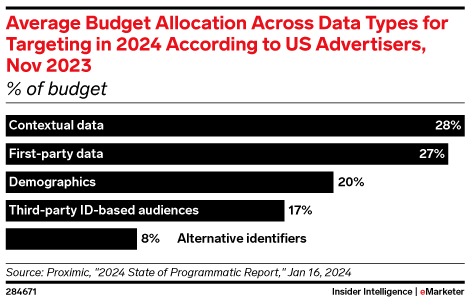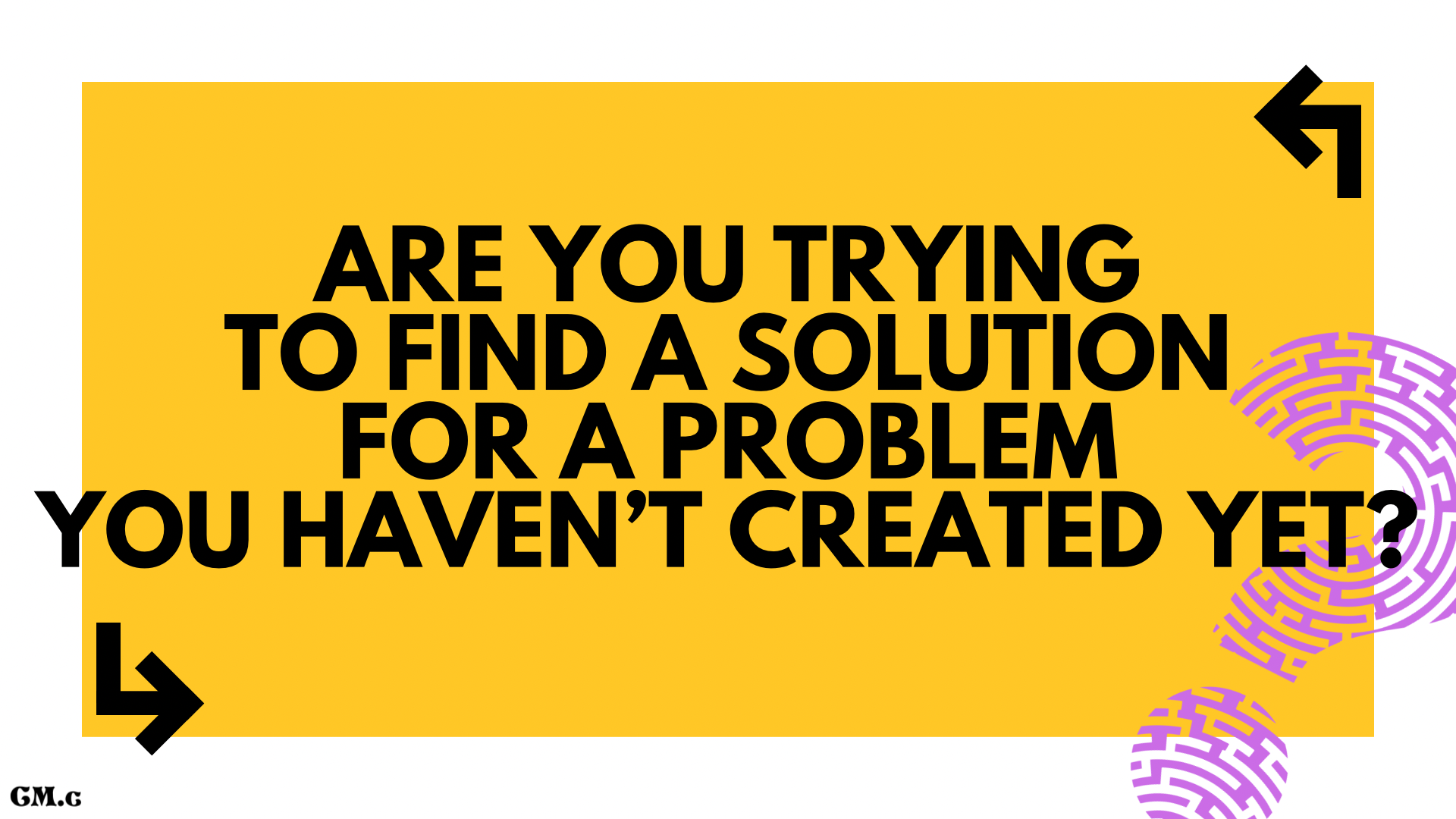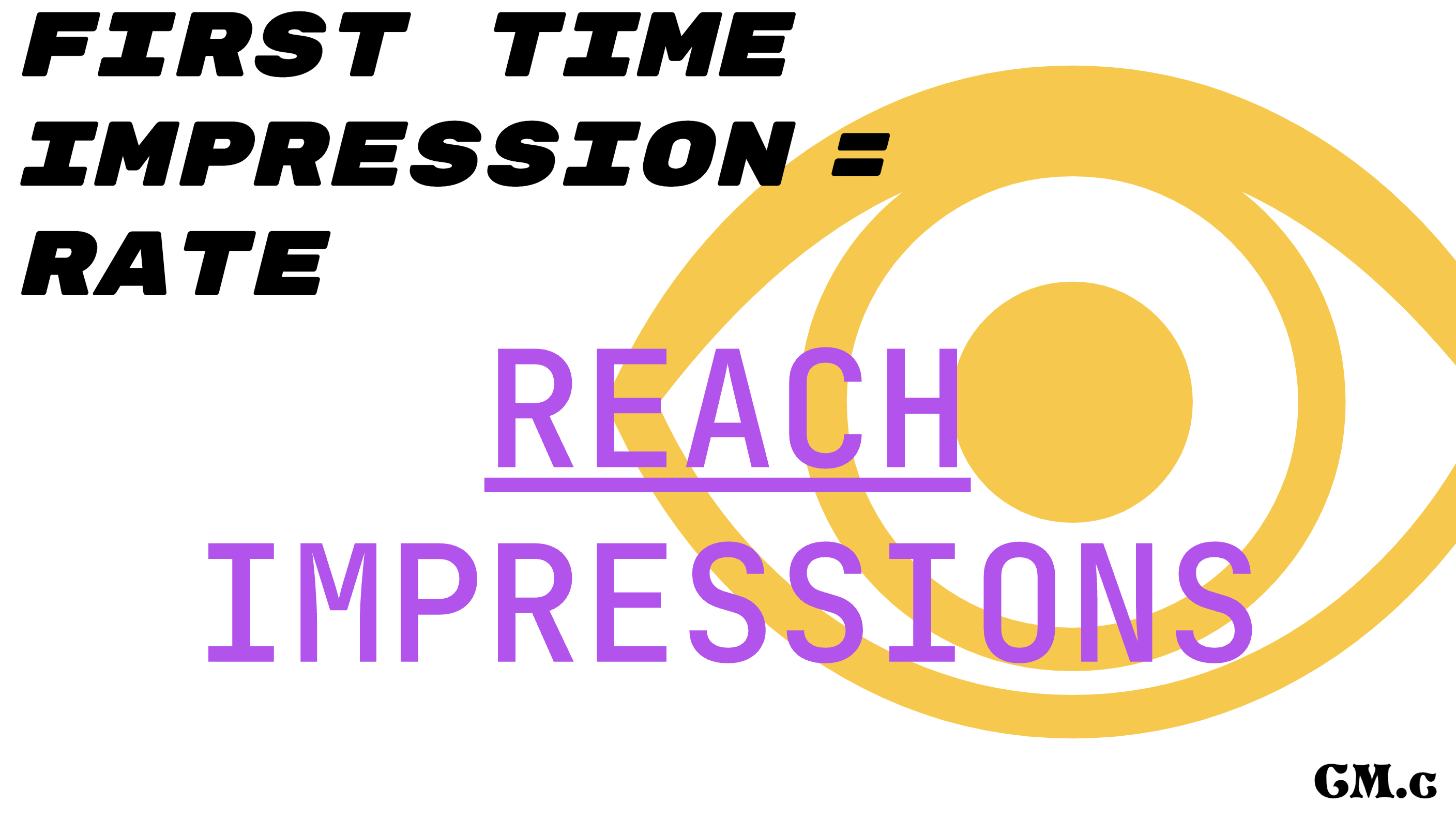⃛Level Up ↴
Attention Spans or Filter Quality?
Are our attention spans really getting shorter?
I hear this said a lot.
But I also know people who listen to multi-hour podcasts, read books, binge series, run/bike really long distances, write books, build apps…
Yes, some of those aren’t really the things people are talking about when they say we’re basically goldfish with thumbs. But they’re not irrelevant.
Maybe the explosion of content and choices coupled with the rapid increase in quality and professionalization of many content creators mean our bar for “bad content” is really low.
Maybe instead of having shorter attention spans we have stricter quality filters.
Wednesday Bits & Bytes | 032724
Ad Market Expands 10.4% In February

The U.S. ad market expanded at its greatest rate in nearly two years in February – increasing 10.4% over February 2023
…
February also was the 11th consecutive month to post growth, providing a further indication that the U.S. ad economy is well out of recession.
This should mean good news for the economy as a whole too.
It also explains those CPM and CPC increases I’ve been noticing.
YouTube Warns Channels Against Deleting Videos
YouTubers: Don't delete videos unless you have a very, very good reason. When you delete a video, you delete your channel's connection to the audience that watched that video. If you want to maximize your growth, keep your videos public or unlist then if you must.
— Todd B. (@hitsman) March 23, 2024
Well that’s an interesting tidbit. & is this a “normal” algorithm thing? Or; does it map across platforms?
How consumers find new brands and products on social media, marketplaces, and brick-and-mortar retail in 5 charts
Instead of putting all 5 charts here, just click the link.
Tuesday Bits & Bytes | 032624
Exploding Topics: Anti-Detect Browser

Anti-detect browsers are web browsers designed to minimize the digital footprint of their users.
These browsers use a combination of techniques (changing user agent strings, modifying the browser’s fingerprint, using a VPN, etc.) to hide or modify a user’s device and browser characteristics.
They may also block or modify JavaScript, cookies, and browser plugins that can be used to track a user’s online behavior.
…
9 out of 10 Americans consider online privacy an important issue.searches for “data privacy tools” have grown by 67% over the past two years.
The cookiepocalypse was just the start.
Spotify adds video learning courses in latest experiment
“One of the most interesting things and trends that we started noticing was more and more people were starting to come to Spotify with some intent of learning,” Jitani says. “And we thought, how can we take this core insight and build something on top of it?”
it can more directly target potential customers based on their existing listening habits. “It becomes much, much easier for us to find the right people for this course and just provide a much more efficient kind of distribution,” Jitani says.
With the experiment, Spotify is offering courses via a freemium model, similar to the one it used when it first launched audiobooks.
Many lessons wrapped up in this:
- Spotify is serious, which means now is the time to start experimenting with its ad platform (if you haven’t already)
- Distribution matters
- Context is the new targeting paradigm
- Everything is a video platform now
- Entertainment isn’t the only content angle out there, people want to learn (otherwise, why else are you reading this right now?)
LinkedIn introduces Dynamic UTMs to optimize your web traffic through LinkedIn ads
Marketers – only one time per campaign – will add a dynamic UTM parameter to their campaign and then we’ll automatically pull in the account, campaign and/or creative name into the destination URL so it can be picked up by analytics tools, allowing marketers to more easily analyze results.
And there was much rejoicing!
Eddie Bauer changed its logo because Gen Z doesn’t read cursive
After nearly 60 years of its distinctive cursive script, the outdoor retailer is ditching the script for blocky text and a goose.
I’m torn on this one because I saw the old EB logo a lot growing up, but the new one should work way better for a lot of materials and uses. But it’s also just another chunky sans serif wordmark now.
As we start to lose more and more of the old brand aesthetics, we may also lose a lot of character (which also means there is a growing void you can launch yourself into if you’re willing to zig when others zag).
Canva acquires Affinity to fill the Adobe-sized holes in its design suite
Web-based design platform Canva has acquired the Affinity creative software suite, positioning itself as a challenger to Adobe’s grip over the digital design industry. Canva announced the deal on Tuesday, which gives the company ownership over Affinity Designer, Photo, and Publisher — three popular creative applications for Windows, Mac, and iPad that provide similar features to Adobe’s Illustrator, Photoshop, and InDesign software, respectively.
Between this and the Figma deal getting blocked, Adobe better get its game face on.
Creative is the biggest lever you have left for targeting. Canva makes it easy. This deal may make it more legit with the design crowd.
Sunday Bits & Bytes | 032424
Agency Adventure is a custom, desktop video game created by Snapchat to help educate our Agency partners on the value Snapchat provides and how they can level up results for their clients and reach their audience.
Guiding question: what if you made it fun?
The idea is that there are two types of failure: abject failure and convincing failure.
…
if you execute to a high standard, one where it’d be “unlikely that another team, even with more time and effort, could succeed”, that’s a convincing failure. Under this scenario, perfect execution of the plan lets you know that you got your strategy wrong, and you can learn something meaningful for the next iteration, project, or venture.
Failing is fine, as long as it’s done convincingly.
The process is good or bad at its inception not by its result.
— Richard White (@RamblinWreck34) March 23, 2024
Consumer Brands and Essential Inputs
Collaborative Fund’s Consumer Stack Investment categories (as I interpret them):
These essential inputs become the backbone for many consumer plays.
- Deconstrucring the food supply chain to increase sustainability and improve health outcomes (e.g. “cultivating fat as an ingredient”)
- Breakthrough tech that decarbonizes products and processes (e.g. turning CO2 into textiles)
- Breakthrough tech that makes supply chains more flexible (e.g. perishable goods not requiring a full truck load to ship)
Back the inputs, pave the way for the future.
The one AI-related existential risk I’m worried about
TL;DR: humans
Large Grocers Took Advantage of Pandemic Supply Chain Disruptions, F.T.C. Finds
A report found that large firms pressured suppliers to favor them over competitors. It also concluded that some retailers “seem to have used rising costs as an opportunity to further hike prices.”
So about those greedflation concerns…
Saturday Bits & Bytes | 032324
Marilynne Robinson on Biblical Interpretation, Calvinist Thought, and Religion in America (Ep. 207)
On the continuing denigration of John Calvin:
The cure, of course, is to read Calvin, which no one does, and the reason no one does is because they think they know what they’ll find. It’s very self-perpetuating from that point of view when a negative reputation is established.
Once you get a reputation it is hard to shake. And you’re rarely in control of the reputation you get.
This is especially true if you’re challenging the status quo.
5 charts on how third-party cookie deprecation will change ad buys

AI will turbocharge contextual targeting of all kinds.
Demographics are dead (& generations are garbage).
Microsoft Buying Ads On Google Search To Drive More Searches On Bing
When you click on the ad in Google Search, you are taken to the Bing Search results for that query.
I kind of love this strategy.
TikTok’s algorithm has always been a black box. But researchers are finally figuring it out
According to the study’s findings, between 30% and 50% of the first 1,000 videos TikTok users encounter are exploiting their past interests. Recommended videos are driven by a number of factors, most importantly whether the user liked a similar video, as well as who they follow on the platform. Fewer seem to be driven by the percentage of the video a user watched.
…
different users have very different experiences and/or are sort of treated differently by the algorithm
The algorithm is evolving. The importance of watch time may be diminishing as the pool of data deepens.
The one constant with any of the platform algorithms is that they change.
Spotify Is Launching New Ad Studio Product
Powered by a model which analyzes behavioral signals, Podcast Streams takes campaigns beyond standard targeting to reach engaged audiences who are more likely to listen to podcasts.
Limited to podcasts…for now?
I expect to see more targeting options like this across platforms as AI becomes further ingrained.
Post by @dsqtView on Threads
Building a brand is
- Expensive in the short run
- Cheap in the long run
Friday Bits & Bytes | 032224
Evolving Google Analytics for more insightful measurement
To make it easier to compare these actions across platforms, we are aligning how conversions are defined across Google Ads and Analytics to give you a consistent view of your Google advertising performance. With that, we are introducing key events in Google Analytics that will replace what currently exists as conversions for behavioral analytics.
Say what? A “conversion” in GA4 was not measured the same as a “conversion” in Google Ads, which is…confusing.
Now (or soon, it’s still rolling out) in GA4, what had been called “conversions” are now “key events”. Conversions will appear in the Advertising reports section and match what is in Google Ads.
From Google:
- Event = measure specific interactions or occurrences on your website or app
- Key Event = measure an event that you mark as important to your business
- Conversion = measure performance of your ad campaigns and optimize bidding
If you want to know more, this video is the best resource on it I’ve seen from Google so far.
How to write a landing page that converts
Purchase Rate = Desire - (Labor + Confusion)
To increase the purchase rate, increase the visitor’s desire to purchase while decreasing their labor (effort) and confusion
translate features into the value they’ll get from using it. And proactively handle any objections they might have.
Provide no-brainer value and make it easy.
Copywriting Friday: What part of France are you from?
To increase conversions, we need to understand and remove the objections that are stopping qualified prospects.
…
Look for these three types of objections: obvious, embarrassing, and assumed. Then use your best salespeople to help you craft the strongest counter-objections.
Think about your services or processes: Which of them might you combine into a named system that implies the work is being done for your customer?
I’m looking forward to using the “Objection/Counter-Objection” method in a project soon.
Concrete language boosts sales.
from the Nudge newsletter

Specific, tangible language significantly increases customer satisfaction and spending.
Use clear, concrete language.
Easy to understand. Hard to confuse.
February Marks a Turnaround for Existing Home Sales
Sick of waiting for the Federal Reserve to make a move, home buyers and sellers seem to be accepting the market for what it is.
…
In February, contracts closed on roughly 4.4 million existing homes, an increase of 9.5% from the month prior
The median existing-home sales price elevated to $384,500, the eighth consecutive month of year-over-year price gains. However, the sales prices across all US homes jumped only 0.6% from January to February, which resembles pre-pandemic trends
Changes in the housing market can have far reaching ripples.
On Top Social Media Referral Traffic Sources
YouTube is a sleeping giant—it’s not just a TikTok competitor or a Netflix competitor or a search competitor or a Spotify competitor.
SEO as we know it is about the change dramatically. How do you keyword stuff for an LLM? How do you get discovered via chat but not give away all your content? How many search channels do you optimize for in a post-10 blue links world?
Just remember, don’t go out and try ramping up the top 4 or 6 or 10 right away. Find the channels that match your abilities, align with your brand approach, and are actually a place you want to invest your time.
Being everywhere rarely helps.
Being engaged where your audience is always helps.
see this post on LinkedIn
Tuesday Marketing Links | 031924
IN AN ERA OF COLLABORATION SATURATION, HOW DO BRANDS STAND OUT?
71% of people agree that the story you tell around a collaboration is just as important as the final product.
Every market is saturated now.
How’s your story?
When influencer overexcitement backfires
Overexcited language (e.g. “LOVE THIS!”) increases engagement for micro-influencers by 38% but reduces it for macro-influencers by 31%.
…
Generally, we’re suspicious if it looks like someone’s trying to persuade us. When content is informative, rather than promotional, it builds trust and makes us less suspicious that it’s an attempt to persuade us.
People are advertising savvy these days, respect that.
Consumers spend more with digital wallets
Consumers who use digital wallets spend 31% more than non-users across a range of categories
The disparity in wallet use across income brackets suggests that—at least in part—larger digital wallet sales are the product of digital wallet users having more disposable income than non-users.
The more abstracted the transfer of money becomes, the easier it is to spend.
Facebook is reviving one of its earliest features after hiding it for years
Facebook is bringing back the Poke, and, apparently, Gen Z is loving it.
Maybe the biggest trend really is nostalgia for a slightly earlier time.
As technology advanced we became increasingly more like computers—adapting to their way of working, of interfacing.
The promise of AI is that could open up the path to allow us to become more human again.
Disguised as a post about a Substack feature is a reminder that:
- Most new platform features are attempts at moat building
- You don’t have to use every bell & whistle
- You can treat social media as a public journal that you repurpose elsewhere later
Are you trying to find a solution for a problem you haven’t created yet?
A hypothesis is useless without a test.
Pick a measuring stick and get going. Iterate over time.
You can’t have a return on investment if all you’ve invested in is planning out how to measure ROI.

via the Louder Than Words podcast
Saturday Marketing Links | 031624
AI Prompt Engineering Is Dead / Long live AI prompt engineering
According to one research team, no human should manually optimize prompts ever again.
There is an alternative to the trial-and-error-style prompt engineering that yielded such inconsistent results: Ask the language model to devise its own optimal prompt.
this automatically generated prompt did better than the best prompt found through trial-and-error. And, the process was much faster
The optimal prompts the algorithm spit out were so bizarre, no human is likely to have ever come up with them.
The centaur approach is usually better than all human or all AI (at least for a while).
Which makes sense since the two types of “brains” function differently. It’s about finding the optimal combination of the two, not one directing the other.
Speaking of…
Of top-notch algorithms and zoned-out humans
A low-grade algorithm and a switched-on human make better decisions together than a top-notch algorithm with a zoned-out human. And when the algorithm is top-notch, a zoned-out human turns out to be what you get.
…
rather than thinking of the machine as a replacement for the human, the most interesting questions focus on the sometimes-fraught collaboration between the two.
Gold, bitcoin and stocks hit record highs this week. Then came inflation data
investors shrugged off a higher-than-expected 3.2% annual rise in consumer prices and cheered a cooldown in some categories like food prices.
…
US wholesale inflation rose 1.6% for the 12 months ended in February, its fastest clip in months, due to a spike in energy prices.
…
Markets expect the central bank to hold rates steady this month and begin cutting in June or July
Consumer prices climbed 3.2% in February as 2% goal remains elusive
The 12-month inflation rate has been stuck between 3% and 4% since June, hovering just above the Federal Reserve’s official 2% target
Finished reading: Head Lopper Vol. 2: Crimson Tower by Andrew Maclean 📚
I like this take on new tech adoption from Douglas Adams.
any new technology is received differently by three different groups of people.
If you’re below the age of 15, it’s just the way things have always been.
If you’re between the ages of 15 and 35, it’s really cool and you might be able to get a job doing it.
If you’re above the age of 35, it’s unholy and against the order of society and will destroy everything.
via a16z
“Audio all the time” is one of my core marketing beliefs for 2024, so I always like more evidence that it’s a good idea.
88% of TikTok users agree that sound is vital to the TikTok experience. And for 73%, sound prompts them to “stop and look” at an ad, while also making them less likely to skip, watch longer on average and feel more positive.
via TikTok


